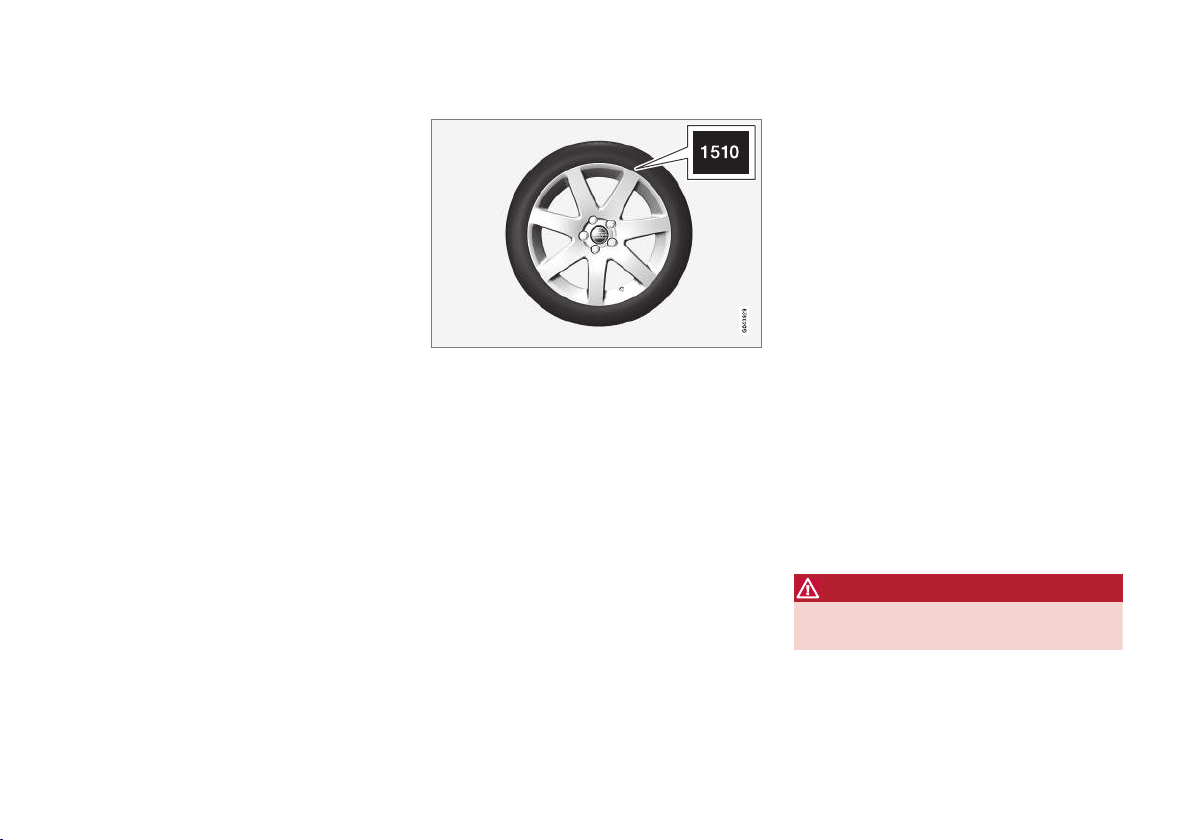Loading ...
Loading ...
Loading ...

WHEELS AND TYRES
332
Tyres - maintenance
Amongst other things, the function of the tyres is
to carry load, provide grip on the road surface,
dampen vibration and protect the wheel from
wear.
Driving characteristics
Tyres greatly affect the car's driving characteris-
tics. The type of tyre, dimensions, tyre pressure
and speed rating are important for how the car
performs.
Tyre age
All tyres older than 6 years old should be
checked by an expert even if they seem undam-
aged. Tyres age and decompose, even if they are
hardly ever or never used. The function can
therefore be affected. This applies to all tyres that
are stored for future use. Examples of external
signs which indicate that the tyre is unsuitable for
use are cracks or discoloration.
New tyres
Tyres are perishable. After a few years they begin
to harden at the same time as the friction
capacity/characteristics gradually deteriorate. For
this reason, aim to get as fresh tyres as possible
when you replace them. This is especially impor-
tant with regard to winter tyres. The last four dig-
its in the sequence mean the week and year of
manufacture. This is the tyre's DOT marking
(Department of Transportation), and this is stated
with four digits, for example 1510. The tyre in the
figure was manufactured in week 15 of 2010.
Summer and winter wheels
When summer and winter wheels are changed
the wheels should be marked with which side of
the car they were mounted on, for example L for
left and R for right.
Wear and maintenance
Correct tyre pressure (p. 334) results in more
even wear. Driving style, tyre pressure, climate
and road condition affect how quickly your tyres
age and wear.
To avoid differences in tread depth and to pre-
vent wear patterns arising, the front and rear
wheels can be switched with each other. A suita-
ble distance for the first change is approx.
5000 km and then at 10000 km intervals.
Volvo recommends that an authorised Volvo
workshop is contacted for checking if you are
uncertain about tread depth. If significant differ-
ences in wear (> 1 mm difference in tread depth)
between tyres have already occurred, then the
least worn tyres must always be fitted on the rear.
Understeer is normally easier to correct than
oversteer, and leads to the car continuing for-
wards in a straight line rather than having the
rear end skidding to one side, resulting in possi-
ble complete loss of control over the car. This is
why it is important for the rear wheels never to
lose grip before the front wheels.
WARNING
A damaged tyre may lead to loss of control
over the car.
Storage
Wheels with tyres fitted must be stored lying
down or hanging up - never standing up.
Loading ...
Loading ...
Loading ...